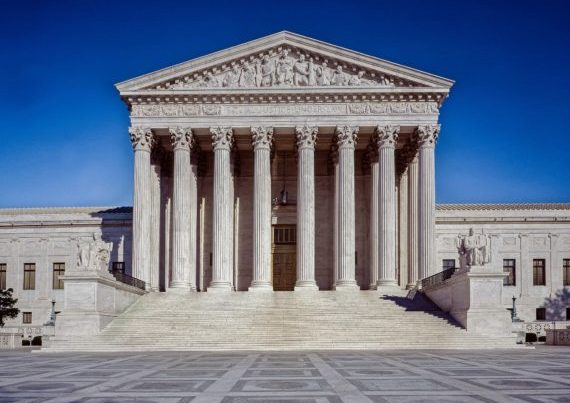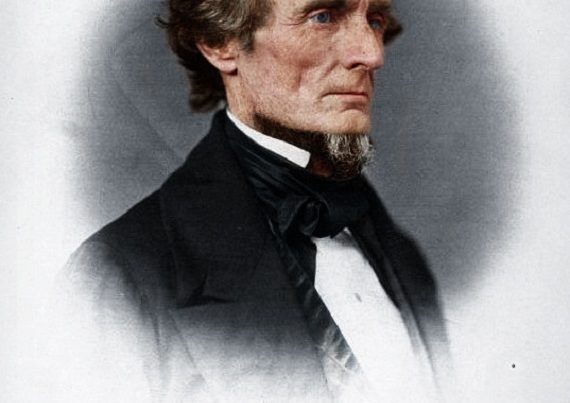
While watching a seventy-minute interview with Professor Adam Domby about his book, The False Cause, I was surprised at the number of errors, biased interpretations and even endorsement of “extralegal” conduct by anti-statue mobs. The False Cause focuses on Civil War and Reconstruction memory, particularly involving Confederate memorials.
First, and foremost, Domby erroneously proclaims that the signature Confederate statues erected in Southern courthouse squares between 1900 and 1920 were chiefly installed to celebrate white supremacy. In truth, they were erected because the old soldiers were fading away. The typical surviving Confederate veteran was aged 60 in 1900 and 80 in 1920. Moreover, memorials for both Federal and Confederate soldiers surged during the war’s semicentennial from 1911 to 1915. Additionally, prior to 1900 the postbellum South was too poor to fund many memorials. Even in 1900 the region’s per capita income was only half the national average. Finally, after the sons of Confederate veterans eagerly joined the military to help win the 1898 Spanish-American War, Union veterans realized that their former rivals were also Americans who deserved their own memorials.
Second, Domby wrongly singles-out Southerners as racist without mentioning Northern racism. Consider, for example, the widespread obsession with defeating black heavyweight boxing champion Jack Johnson.
Johnson became the first black to hold the title in 1908. Since most white boxing fans were outraged that a black had become champion, promoters searched for a white boxer to beat Johnson. In 1910 they matched him against previous champion Jim Jeffries who had earlier retired undefeated. San Francisco novelist Jack London had summoned The Great White Hope,
“Jim Jeffries must now emerge from his Alfalfa farm and remove that golden smile from Jack Johnson’s face. Jeff, it’s up to you. The White Man must be rescued.”
The bout attracted unprecedented attention. Led by The New York Times, the mainstream press was hostile toward blacks:
“If the black man wins, thousands and thousands of his ignorant brothers will misinterpret his victory as justifying claims to much more than mere physical equality with their white neighbors.”
After Johnson won the fight, race riots erupted in New York, Washington, Pittsburgh, Philadelphia, Los Angeles, Omaha, Columbus, St. Louis and Wilmington, Delaware.
It took boxing promoters another five years to find a white fighter, Jess Willard, to beat the aging Johnson in 1915. When his victory was displayed on a bulletin board updated by telegraph in New York’s financial district the roar from the streets “would have done credit to a Presidential victory,” according to the New York Tribune. “For a moment the air was filled with hats and newspapers. Respectable businessmen pounded their unknown neighbors on the back” and acted like gleeful children.
Third, Domby sarcastically disparages the fighting qualities of the Confederate soldier. He suggests that the Civil War would have lasted far longer than four years if Southern warriors were any good. He’s merely repeating a common but flawed analysis taught by academics. America’s Revolutionary War, they argue, lasted eight years, which was twice as long as the Civil War. But that remark overlooks the relative casualties.
Soldier deaths during the Revolutionary War totaled 25,000, which was 1% of the population. In contrast, at least 300,000 Confederate soldiers died during the Civil War, which was about 5% of the available white population. (Assuming a larger 400,000 Northern soldiers died during the Civil War their loss ratio would have been only 1.8%.) Thus, the Confederate death ratio was five times the rate of the Revolutionary War in half the time. Such casualties were unsustainable. If America were to engage in a war today and endure the same proportional losses, the number of dead soldiers would total nearly 17 million.
Fourth, to support his assertion that Confederate statues are “all about” white supremacy Domby referred to businessman Julian Carr’s speech at the 1913 Silent Sam statue dedication at North Carolina University. Carr notoriously boasted of whipping a black woman shortly after the War as punishment for insulting a white woman. In the telling of the story Domby makes a number of ommissions and misrepresentations.
First, his claim that Carr was the most prominent speaker is dubious. There were five others including the state’s governor and the university’s president. None made racist remarks, nor are there any such words engraved into the statue.
Second, although the nineteen-year-old Carr’s racist incident is indefensible, Domby fails to explain that he later became a major benefactor to blacks. His was among the first Southern textile mills to employ blacks in production work as opposed to maintenance. His donations to black education included the North Carolina College for Negroes, presently known as North Carolina Central University (NCCU). The school’s black founder praised Carr: “I have never known the first time for him to fail to give to any enterprise which he thought would benefit the colored people or to lend his influence in their behalf. . . I have known scores and scores of colored people who were the recipients of his kindness and generosity. . . I have never known a colored person too poor or ignorant who went to General Carr for assistance who did not receive the same.”
Third, Carr also helped black educator William Gaston Pearson who was born a slave in 1858 and worked as a youth at the Carr Factory. Carr recognized his potential and financed his education at Shaw University where Pearson graduated in 1886 at age 28. Thereafter, Pearson began teaching in Durham. In 1922 he became principal of Durham’s Hillside Park High School. In 1931, Hillside was accredited by the Southern Association of Secondary School and Colleges, a major achievement for a black high school during the Great Depression. Pearson also made other business, religious, and educational contributions to the Durham community.
Fifth, Domby excuses such present acts as mob destruction of Confederate memorials by explaining that any laws protecting them justify that opponents use so-called extra-legal means to demolish them. Since “extra-legal” is merely a euphemism for illegal, Domby’s argument is the same as the one the Ku Klux Klan used. The Klan argued their extra-legal conduct was necessitated by the ironclad control of the voting apparatus of Carpetbag regimes. Even though he condemned the KKK, South Carolina’s last Carpetbag governor (Daniel Chamberlain) considered it a predictable result:
No excuse can be framed for its outrages, but its causes were plain . . .It flourished where corruption . . . had climbed into power and withered where the reverse was the case. What is certain is that a people of force, pride, and intelligence [when] driven to choose between [temporary] violence and lawlessness and [permanent] misrule will infallibly choose the former.
In his farewell address to the Massachusetts legislature in January 1866, Republican Governor John Andrew warned that Reconstruction should require no humiliation in the South and that it should ally with “the natural leaders” of the region. He prophetically explained that if such men were not taken in as friends, they would resume their leadership as enemies. Republican Reconstruction architects Thaddeus Stevens and Oliver Morton ignored Andrew’s advice.
Chamberlain ultimately concluded that Radical Reconstruction was born of sinister motives, cruelly exploited Southern blacks and was destined to die of its own inadequacies. In retrospect he was certain “there was no possibility of securing good government in South Carolina through Republican influences. . . The vast preponderance of ignorance . . . in that party, aside from downright dishonesty, made it impossible.” The blacks, he felt, were egregiously abused. “Race was used as the tool of heartless partisan leaders.” Blacks were “mercilessly exploited for the benefit of a political [Republican] party, and heartlessly abandoned when the scheme had failed.”
Sixth, Domby makes the common mistake of citing the Declaration of Causes for secession of such states as Mississippi and South Carolina as so-called proof that the Civil War was all about slavery. Yet he ignores the sectional conflicts that are revealed by comparing the constitutions of the CSA and USA.
Unlike the Federal Constitution, the Confederacy’s did not permit protective tariffs. Southerners were ahead of their time in recognizing the benefits of Worldwide free trade. They also outlawed public works spending, which were instead to be financed by the states themselves. Since Southerners disliked crony capitalism their constitution prohibited subsidies for private industry, which were arguably allowed under the “general welfare” clause of the Federal Constitution.
The Confederate Constitution only permitted spending for military defense, repayment of national debt, and the operating costs of the Central Government, not pork barrel spending. In order to further discourage pork spending the President was given a line item veto and bills were normally introduced to Congress by the executive branch. If Congress originated a bill it would need a two-thirds majority to pass as opposed to a simple majority for one proposed by the President. Although her constitution authorized one, the Confederacy never formed a Supreme Court. As a creature of the Federal Government, Confederate leaders, their parents and ancestors had observed that the U. S. Supreme Court tended to make rulings that increasingly concentrated power in the Central Government, which was contrary to the South’s tradition favoring states’ rights.
Seventh, even though Domby states, “Anytime you have someone trying to prevent a topic from being debated, it is a sign they are on the losing side” he never responded to my request to be interviewed on this YouTube channel.
In sum, Domby’s interview by the Avery Research Center suggests that his research merely follows the predetermined conclusion of cloistered academics regarding the reasons for Confederate memorials. Presumably his only purpose was to find evidence that the statues were erected to celebrate and enforce white supremacy, particularly up to 1920. But given the wartime loss ratios noted earlier, only a cynic could reach such a conclusion. To repeat for emphasis, if America were to fight a war today with the same loss ratio as the Confederates, our soldier deaths would total about 17 million. Nobody can doubt that 30 years later the families would badly want to build memorials to both the dead and survivors before they faded away.






